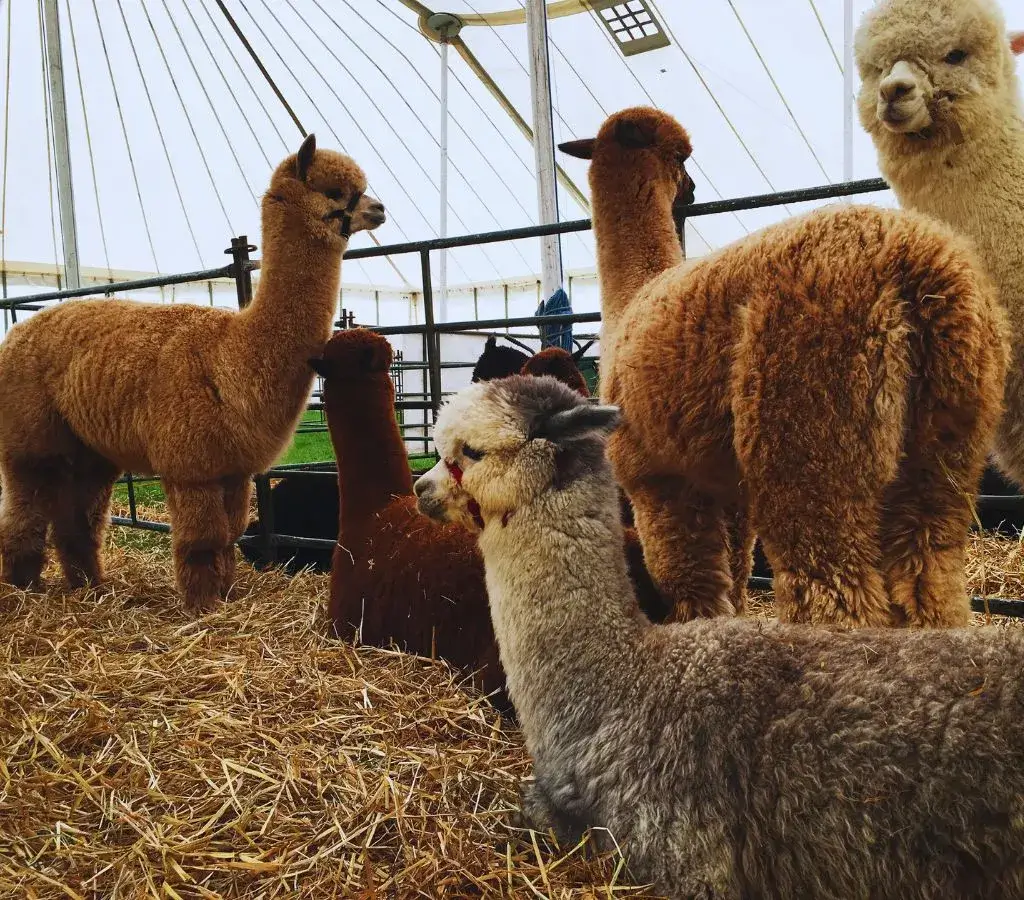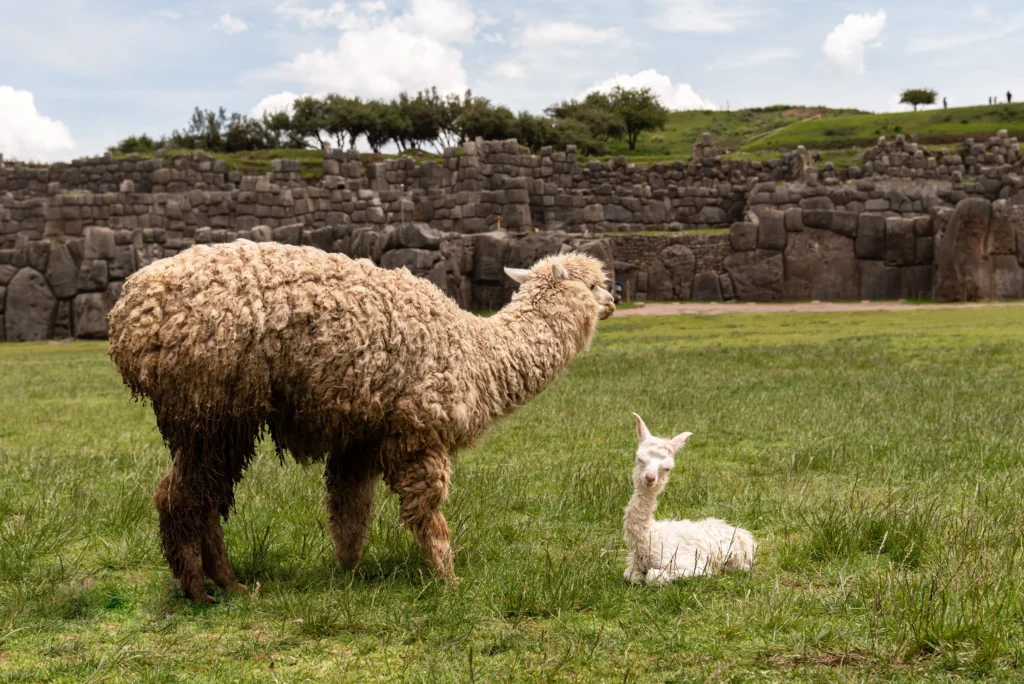The history of the Peruvian alpaca goes back millennia, being a cultural and economic treasure for Peru. This South American camelid has been bred and appreciated by the pre-Inca civilizations and later by the powerful Inca Empire.
Over time, the alpaca continued to be a pillar of the Peruvian economy, especially in the Andean regions. Its soft and luxurious fiber has conquered global markets, positioning Peru as one of the main producers and exporters of alpaca products. Today, it continues to be an emblem of the country's cultural and natural wealth and in this article we will see the importance, history and types that exist.
The history of the Peruvian alpaca is a fascinating narrative that stretches back thousands of years in the Andes, where this creature has been an integral part of the region's culture and economy. From its origin to its current state, the alpaca has gone through a series of evolutionary stages and has played diverse roles in the lives of Andean populations.

The alpaca or scientific name Vicugna pacos, is a species of mammal native to the Andes of Peru, Bolivia, Ecuador, Argentina and Chile. It is believed to be descended from the wild species such as the vicuña, because of its similar characteristics. Genetic studies suggest that the alpaca was domesticated approximately 5000 years ago in the Andean region, making it one of the first animals to be domesticated by humans in South America.
The domestication of the alpaca was a gradual process involving ancient Andean civilizations, such as the Incas. These ancestral peoples bred and selected alpacas for their useful qualities, such as their fine wool and nutritious meat. Through selective breeding, indigenous populations were able to develop varieties of alpacas with different desirable characteristics.
The alpaca is native to the highlands of the Andes, where it lives at altitudes ranging from 3500 to 5000 meters above sea level. These mountainous regions offer a challenging environment, with extreme climatic conditions, including cold temperatures, high solar radiation and scarce vegetation. The alpaca's adaptation to these hostile habitats is remarkable and has been fundamental to its survival and development as a species.
The alpaca has played an important role in the history of South America, from colonial times to modern times, influencing the region's economy, culture and society.
The alpaca has played a significant role in both colonial and modern times, especially in the Andean regions of South America, where it has been valued for its fiber, strength and adaptability to the environment. In colonial times, the Spanish conquistadors recognized the value of alpacas and introduced them into the local economy as part of the encomienda system, using their fiber to produce high-quality textiles that were exported to Europe.
The alpaca is a herbivorous animal with a robust body and a height at the withers of about 90 cm. It has a small head, small and straighter ears and a short tail. This South American camelid is characterized by its soft, woolly coat, which can have a variety of natural colors, such as white, black, brown and gray. Its fiber is highly valued for its softness, warmth and resistance, which makes it a valuable resource for the textile industry.
The alpaca has developed physical and behavioral adaptations to survive in the Andean habitat. Its thick fur acts as a thermal insulator, protecting it from the region's low temperatures. In addition, its ability to efficiently metabolize the scarce food available allows it to subsist in areas with limited resources.
Although both are South American camelids, the alpaca and the llama present significant differences in appearance, behavior and use.
A key difference lies in their size and physical structure. The alpaca is generally smaller and more compact than the llama, with an average height of about 90 centimeters to the shoulder, while the llama can reach heights of up to 1.8 meters. In addition, the alpaca has a shorter neck and smaller head compared to the llama.
Another important difference lies in the specific use of each animal. While the alpaca is valued primarily for its soft, woolly fiber, used in the textile industry for the production of high-quality garments, the llama has historically been used as a pack animal in the mountainous regions of the Andes, carrying heavy loads across difficult terrain.
In terms of behavior, the alpaca tends to be more docile and calm than the llama, which makes it easier to handle and breed. On the other hand, the llama can be more resistant and aggressive, especially when it feels threatened.
Alpacas are curious animals and show a remarkable interest in their environment, when they see that they are in front of something new they adopt a more alert and vigilant behavior to everything that may happen. In addition, compared to llamas, alpacas are more social and interact with each other by communicating through visual and auditory signals.
Food and nutrition are crucial to the health and well-being of alpacas, as their herbivorous diet is based on consuming quality pasture and fresh water at all times to meet their nutritional needs.
Alpacas are ruminant animals, which means they have a specialized digestive system that allows them to efficiently break down plant fiber. However, due to the harsh climatic conditions of their natural habitat, it is important to provide them with nutritional supplements, such as mineral salts and vitamins, to ensure an adequate balance of nutrients in their diet.

The alpaca has played a fundamental role in the culture and economy of Andean civilizations, including the Inca Empire, where it was considered a sacred animal and an invaluable source of resources.
Today, the alpaca continues to be an integral part of life in the Andean regions, providing local communities with an important source of income through the sale of its fiber, meat and skins. In addition, alpaca raising is a socially and culturally significant activity that fosters community bonding and preserves ancestral traditions.
In Inca mythology, the alpaca was revered as a sacred animal associated with fertility, prosperity and protection. Its soft, warm fiber was believed to be a gift from the gods and was used in religious ceremonies and sacrificial rituals.
Alpaca fiber continues to be highly valued today for its softness, warmth and durability. It is used in the production of a wide range of high-quality textile products, including sweaters, scarves, blankets and rugs, which are appreciated both domestically and internationally.
In addition to its fiber, alpaca meat and skins are also used in some Andean regions as a source of food and materials for clothing and handicrafts. However, their use is subject to regulations and sustainable practices to ensure the conservation of alpaca populations and respect for the environment.
Alpacas are domesticated South American camelids, prized for their soft, luxurious fiber and docile nature. Currently, there are two main breeds of alpacas: Suri and Huacaya.
Suri: The Suri alpaca is characterized by a long, silky fiber that hangs in elegant, flowing locks. This fiber, known for its luster and softness, grows in long, even locks along the alpaca's body, creating a distinguished and elegant appearance. The texture of Suri fiber is less dense than that of Huacaya, making it ideal for the production of fine, luxurious garments.
Huacaya: On the other hand, Huacaya alpaca is known for its dense and fluffy fiber that grows perpendicularly from the skin in dense and uniform tufts. This fiber offers a feeling of warmth and softness to the touch, ideal for making warm garments and accessories. Huacaya fiber is more elastic than Suri, making it highly adaptable to a variety of textile uses.
Both breeds have their own characteristics and advantages, and the choice between Suri and Huacaya may depend on the end use of the fiber and the personal preferences of the breeder or consumer.
Alpaca breeding is an activity that requires care and attention to ensure the welfare of these animals and the quality of their fiber. This involves aspects such as feeding and nutrition, reproduction and sanitation, as well as adequate infrastructure and equipment.
Alpacas are herbivores and have specific dietary requirements that must be met to maintain their health and vitality. Their diet consists primarily of good quality grass, hay, and in some cases, mineral supplements to ensure proper nutritional balance. If you are raising an alpaca keep in mind that it is important to provide constant access to clean, fresh water, as well as monitor their food intake to avoid problems of overfeeding or nutritional deficiencies.
Breeding alpacas requires careful monitoring and planning. Alpacas usually reach sexual maturity at an early age, but it is crucial to wait until they are physically mature for breeding. They usually mate in the warm season. Gestation lasts approximately 11 months, and special attention must be paid to the health and nutrition of pregnant females. In addition, vaccination and deworming programs should be followed to prevent disease and maintain herd health.
To raise alpacas effectively, adequate infrastructure is required, including secure corrals, shelters for protection from adverse weather, and well-maintained grazing areas. It is important to have facilities that facilitate observation and handling of the animals, as well as equipment such as feeders, waterers, and shearing material for fiber care.
We will answer some of the most frequently asked questions:
Alpacas are native to the Andes of South America, specifically the regions of Peru, Bolivia, and Chile, and have been bred by the indigenous cultures of the region for thousands of years for their fiber and meat. Over time, they have been selected and domesticated to improve their characteristics and adapt them to diverse climatic conditions and human needs.
Although alpacas and llamas are close relatives and belong to the same family of camelids, they have distinct differences in their appearance. Alpacas are smaller and have a more compact body structure compared to llamas, which are larger and have longer necks.
In addition, alpacas have smaller, pointed ears, while llamas have long, curved ears. The fiber of the alpaca is finer and softer than that of the llama, and alpacas are raised primarily for their fiber, while llamas are used as pack animals and for meat in some areas.
Alpaca is valued primarily for its fiber, which is used to make a wide variety of high-quality textile products. This fiber is soft, light and strong, making it ideal for the manufacture of outerwear, accessories, blankets, and rugs.
In addition to fiber, alpacas can also provide nutritious meat, as well as manure that can be used as organic fertilizer in agriculture.


